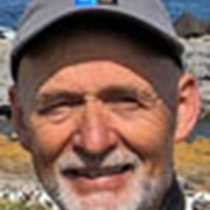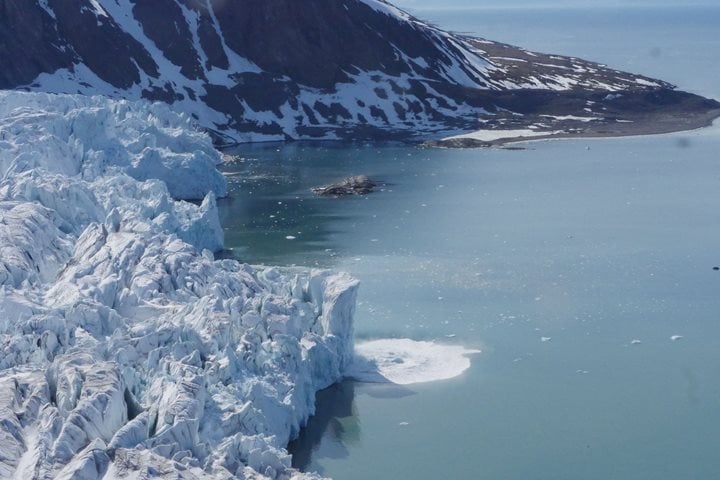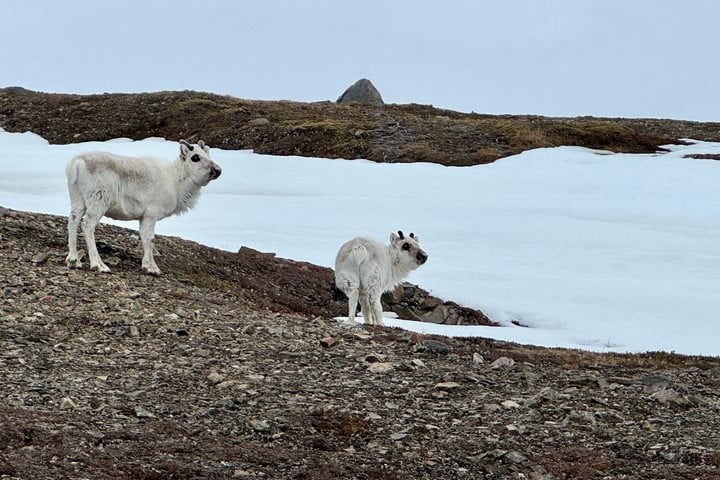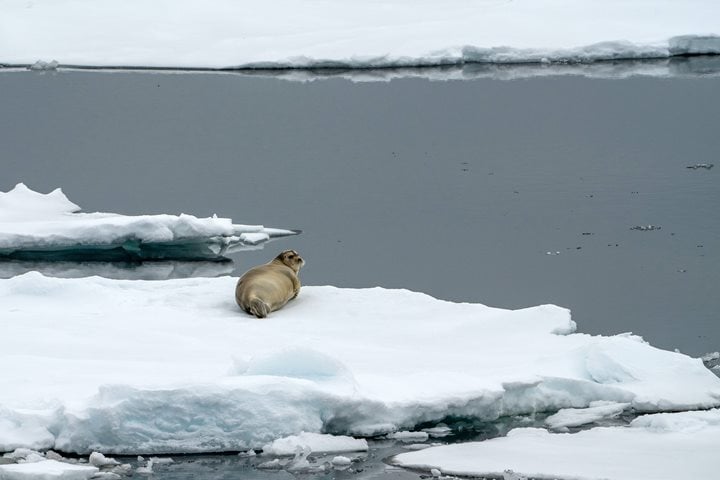This second day of exploration was a day for wildlife lovers! Just before breakfast we dropped National Geographic Explorer’s anchor off Russebukta (”Russian Bay”), located at the southwestern corner of Edgeøya. At 5,073 square kilometers it is the third largest island in Svalbard. It is to a great extent covered by glaciers, but the northern and western areas are ice-free. The vegetation on this part of Edgeøya is more lush than you will find elsewhere in Eastern Svalbard. The whole island is truly pristine and is protected as a nature reserve.
The outdoor adventure of the morning started with hikes of various lengths. During the morning we were fortunate to encounter a number of Svalbard reindeer, many of which were inquisitive and came quite close to the us. We saw lots of droppings indicating that this area is of great importance for migrating arctic geese. The rich vegetation around Russebukta represents an important ”gas station” for the geese. Edgeøya is also important for other birds, and many of us got to see a considerable number of gray phalaropes and purple sandpipers. The following bird species were particularly popular encounters: king eider, long-tailed duck, red-throated diver, arctic tern, and snow bunting. A spectacular performance of courting gray phalaropes was a special highlight for the hiking bird lovers. The phalaropes seemed so much aroused by their hormones that they totally overlooked our presence. This bird has a special sharing of roles between the two sexes: the female, being the most colorful of the two, lays her eggs after mating and then leaves, often mating another male or two. The males are then stuck with all the incubation and feeding of the hatched chicks!
Expedition leader Lucho Verdesoto normally would allow for a nap after lunch, but not so today. While out in a Zodiac this morning, Lucho discovered a large group of walruses hauled out on a small island to the south of Russebukta. He therefore offered a Zodiac cruise to this island in the early afternoon. Most of the walruses were resting ashore, whereas a few others were swimming and popping up around the Zodiacs. Some of us were also fortunate to see a few king eiders swimming next to a walrus resting in the water.
In the late afternoon the photo team introduced guests to the basics of expedition photography and then provided a breakout session for further advice on how to set up various types of cameras, even smartphones, for capturing great moments in the field. In the late evening we started heading north and encountered the first drift-ice, just off the southeastern corner of Edgeøya. Although we never know what the coming days will bring, a polar bear might well be our next highlight, so stay tuned…







